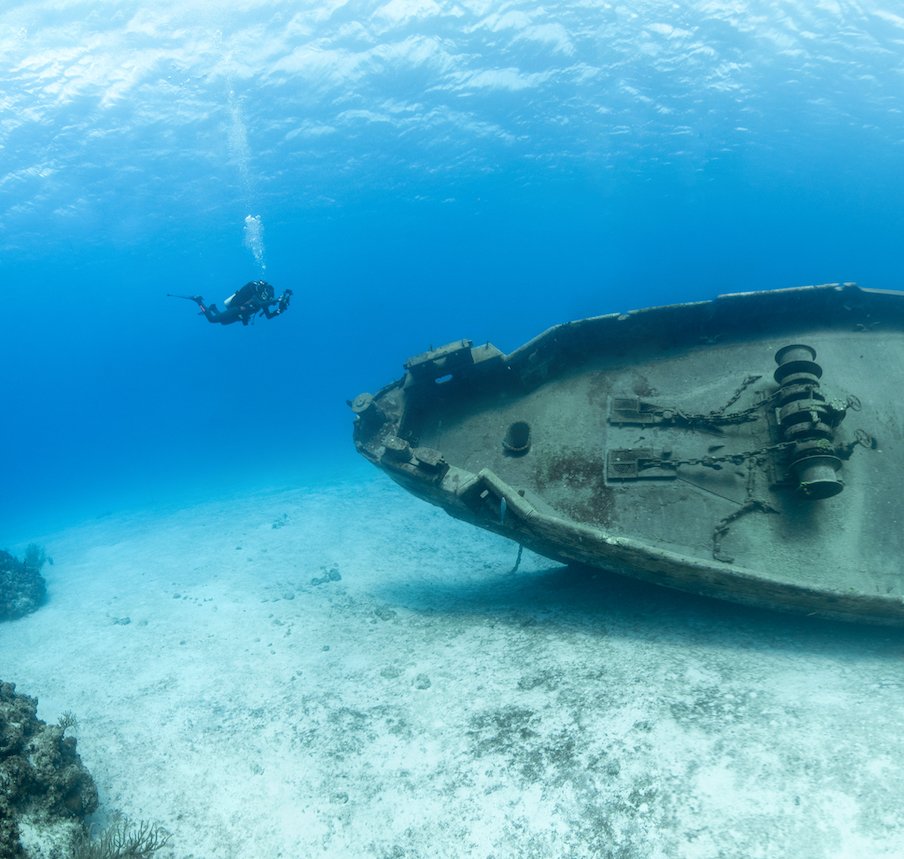Website Design vs. Presentation / Pitch Deck Design
Why One Size Doesn’t Fit All and How to Optimise for Open, Engaging Exploration vs a Controlled, Linear Journey

When designing information transfer to drive sales conversions (bottom of the funnel) or boost brand awareness (top of the funnel), many businesses make a critical mistake, treating their website like an online pitch deck.
While both serve to communicate your brand’s value and the unique problems your product / service solves, they operate in fundamentally different ways.
A pitch deck is a controlled, linear narrative designed to lead an audience step by step toward a conclusion. A website, on the other hand, must be flexible, intuitive, and adaptable, allowing users to enter from any point, explore freely, and find what they need on their own terms.
Understanding the differences between these formats is essential to creating a digital experience that truly works for your audience.
1. The Nature of Control: Linear vs. Open Exploration
Most importantly, a presentation or pitch deck is structured to tell a story in a fixed sequence.
Each slide builds on the previous one, creating a narrative arc. This allows you to carefully control the information flow, ensuring that your audience receives key messages in the order you intend.
A website, however, is designed for open-ended exploration. Users don’t necessarily land on your homepage first, nor do they follow a predefined path. Some may arrive via a Google search to a blog post, others might click an ad directing them to a landing page, and some will navigate directly to your pricing page. Each visitor has a different intent and arrives with a different level of knowledge, and your website must accommodate all of them seamlessly.

2. Information Architecture: Static vs. Dynamic
A pitch deck or presentation communicates information in a confined, structured and sequenced format. The reader processes the content in a single session, following a carefully crafted order of information exposure.
A website, however, must be dynamic and adaptable, often catering to different audiences, who are at different stages of the sales journey simultaneously. It must provide multiple navigation paths, clear CTAs (calls to action), and an intuitive structure that allows users to self-direct their journey based on their needs and interests.
For example, an investor viewing your pitch deck wants a high-level overview, financials, and market potential. Meanwhile, a potential customer visiting your website may be looking for detailed product specs, testimonials, or case studies. A one-size-fits-all approach just won’t cut it!
3. The Mobile Factor: Static vs. Responsive Design
Another major difference is how these formats adapt across devices. A pitch deck is typically created in a fixed landscape format, optimised for large screens. While PDFs may be viewed on mobile, they aren’t designed to reflow content dynamically.
Websites, on the other hand, must be fully responsive, reshaping content based on screen size, orientation (i.e., portrait or landscape rectangle), and user behaviour. Mobile users now account for the majority of web traffic, making adaptability a necessity, not an afterthought.

Designing for the Right Medium
When translating the ideas from your pitch deck into a website, rethink the structure, user journey, and adaptability.
A website isn’t just a digital brochure, it’s an interactive experience that must serve a wide range of users at different entry points. Prioritising clear navigation, responsive design, and audience-focused content will ensure your website works as an effective, engaging tool rather than a rigid presentation.
Would you like a website that works for your users, not against them?
Start by designing for exploration, not just storytelling.
You might also like:
Originally formulated by Robert Metcalfe to describe the impact of networking in telecommunications, Metcalfe’s Law states that the value of a network is proportional to the square of the number of connected users. But in the 21st century, the principle has since been applied to social media, digital platforms, and even websites.
Branding is much more than just a logo or a catchy slogan. It is the essence of your business, encompassing everything from your visual identity to the way you communicate with your customers.
At Haus of Hiatus, we believe that effective branding is the key to building a strong, recognisable, and trustworthy business. This is achieved through the principles of associative learning, the law of least mental effort, and the mere exposure effect.
In today's dynamic marketplace, the most resilient companies continually seek innovative strategies to expand their reach and enhance their brand portfolio.
One such strategy we often recommend in our marketing audits, is the creation of satellite brands. But what exactly is a satellite brand, and how can it benefit your parent company?
If you’ve not heard of a satellite brand, it’s an extension or offshoot of a larger, more established parent brand. While it operates with a degree of autonomy, it remains closely associated with the main brand, benefiting from its resources, reputation, and market presence.
You may not realise it, but at the core of your website and brand is a 'design system,' a method of understanding that helps to harness principles like the Aesthetic-Usability Effect, Jakob's Law, Law of Least Mental Effort, Law of Similarity, Serial Position Effect, and the Von Restorff Effect.
In this article, we’ll delve deeper into how these psychological and neurological phenomena intersect with design systems, reshaping the landscape of your website and brand experiences.
In cognitive psychology, "chunking" refers to the process of breaking down information into smaller, more manageable units – so that they can be recalled quicker.
This concept has significant implications for website design and user experience (UX), as it directly impacts how visitors perceive and interact with your online content.
“One of the most common pitfalls we've observed is the indiscriminate dumping of text onto the website without proper consideration for its relevance or impact.”
If you didn’t realise, your website is the digital storefront of your brand, the virtual gateway through which potential customers interact with your business.
It's a powerful tool for conveying your brand message, generating leads, and driving conversions. However, entrusting the user experience design of your website to lazy or inexperienced marketers can have disastrous consequences.
In today's competitive market landscape, a brand refresh is often the key to staying relevant and resonating with evolving consumer preferences.
However, the success of such an endeavour hinges on more than just a fresh coat of paint; it requires strategic planning, thoughtful execution, and perhaps most importantly, the active involvement of all stakeholders from the outset.
Designing a colour palette for a website is a crucial aspect of creating a visually appealing and cohesive brand experience.
One effective approach to achieving balance and harmony in colour selection is the 60/30/10 rule. This rule dictates that 60% of the colour scheme should be the main colour, 30% the secondary colour, and 10% the accent colour. Here's a detailed guide on how to implement this rule effectively:
Brand signposting is a critical part of a business's visual identity.
But what is it?
It’s all the elements that communicates the company's market position and target customer - that is the logo, taglines, colour palettes, and design systems, to name a few of the main components.
However, striking the right balance in brand signposting is essential, as too much or too little can both pose challenges for start-up and scale-up businesses.
When we’re working with ambitious scale-ups striving to increase their market position by communicating a higher level of professionalism, we naturally come around to the idea of rebranding as a method to get to that next level.
But it’s not straight forward, especially for companies that started off as single-person entity without a clear idea of whether the idea would work.
This is where a change in personality comes in.
In the ever-evolving realm of digital design, the concept of skeuomorphism has emerged as a key principle shaping user experiences. But what exactly is skeuomorphism, and how should it influence your approach to crafting digital interfaces?
Brand position is a crucial aspect of establishing a strong market presence and forging meaningful connections with consumers – that much is obvious. If your branding causes confusion or you’re sending more attention to your competitors, then it’s going to hurt your company’s bottom line.
So how do you find your unique and defensible market position?
Identify and catalogue the semiotic signs of it.
In the world of branding and design, making your product or message stand out is a perpetual challenge.
The Von Restorff Effect, also known as the Isolation Effect, is a psychological principle that can be a game-changer for brands seeking to capture the attention of their audience. This intriguing phenomenon offers insights into human cognition and memory, making it a powerful tool for marketers and designers alike.
But how does it help develop your brand? Here’s our thoughts:
Traditionally, brand ambassadors were often high-profile celebrities or influencers, but a new paradigm has emerged. Your own staff, the people who work behind the scenes, are now recognised as some of the most powerful and authentic brand ambassadors a company can have.
When you think about it, it makes perfect sense. Your employees are the heart and soul of your organisation. They interact with customers, collaborate with partners, and shape the culture of your company.
Your brand is your identity, that intangible power to stir emotions in peoples’ minds.
It's the sum total of all the exposures, impressions, interactions, and experiences people have with your brand. When your brand is well-established, it becomes a household name, making it easier for customers to choose your products or services over competitors'.
But building a brand is not just about having a snappy logo or a catchy tagline; it's about creating brand awareness and perception that is so pervasive that your brand seems to enter the room before you even get to the front door. If you want a brand to be successful, you have to make sure people know who you are.
In today's ever-evolving business landscape, the fate of many brands lies in a precarious balance. Some brands thrive and flourish, while others wither away into obscurity, becoming what we call "graveyard brands." These are brands that have failed to adapt to changing consumer preferences, technological advancements, or market dynamics.
To avoid becoming a graveyard brand, companies must adopt a proactive approach to brand design and growth marketing.
Whenever we’re designing a brand or running a rebranding project, a profound Japanese philosophy guides our approach: Genchi Genbutsu – which translates as "go and see for yourself" or "go to the source,".
This principle is the cornerstone of how we reshape and redefine brands. Originally pioneered by Toyota as their production system, Genchi Genbutsu transcends industries, offering a transformative methodology that goes beyond the surface to unearth the essence of your brand by seeing and experiencing the culture of your organisation. We find the best way to communicate it, is to first experience it!
We often get asked what the difference is between a graphic designer and a brand designer, so we decided to answer it on our website.
Whilst they might sound very similar, they are actually hugely different in function:
Building a compelling website is crucial for an ocean rowing team embarking on a 3000-mile journey across the Atlantic. By choosing a memorable domain name, selecting a suitable platform like Squarespace, customising the design, creating essential pages, sharing expedition information, maintaining an active blog, integrating social media, implementing donation options, optimising for SEO, testing and refining, promoting the website, and tracking analytics, the team can engage their audience, attract sponsors, and provide a central hub for updates and information. Ultimately, a well-managed website reflects the spirit and goals of the expedition, ensuring its success and impact.
Discover the secrets to designing an impactful logo for your expedition!
From understanding your mission to selecting the perfect typography and colours, this guide provides step-by-step instructions.
Build a strong brand identity that captivates investors and attracts sponsors. Unleash your expedition's potential with a memorable logo that embodies your values and excites your audience. Don't miss out on this essential resource!
Embarking on the Talisker Whiskey Atlantic challenge but feeling lost about where to begin? Don't worry, we've got you covered!
Before you start chasing investors or shopping for gear, focus on one crucial aspect: your team's branding. Discover why a strong brand identity is essential for ocean rowing teams and follow our step-by-step guide to designing a captivating brand that attracts investors and sponsors and sets you apart from the competition.
About the Author:
Chris is the founder of Hiatus.Design, a mission-driven branding and website design company that works with clients all over the world.
Over the course of his life, he has travelled to more than 60 countries across six continents, earned two Guinness World Records, completed the legendary Marathon des Sables, summited Mont Blanc and unclimbed peaks in Asia, become a Fellow of the Royal Geographical Society (FRGS), rowed across the Atlantic Ocean and obtained a Masterʼs degree in Business Management (MA).





















